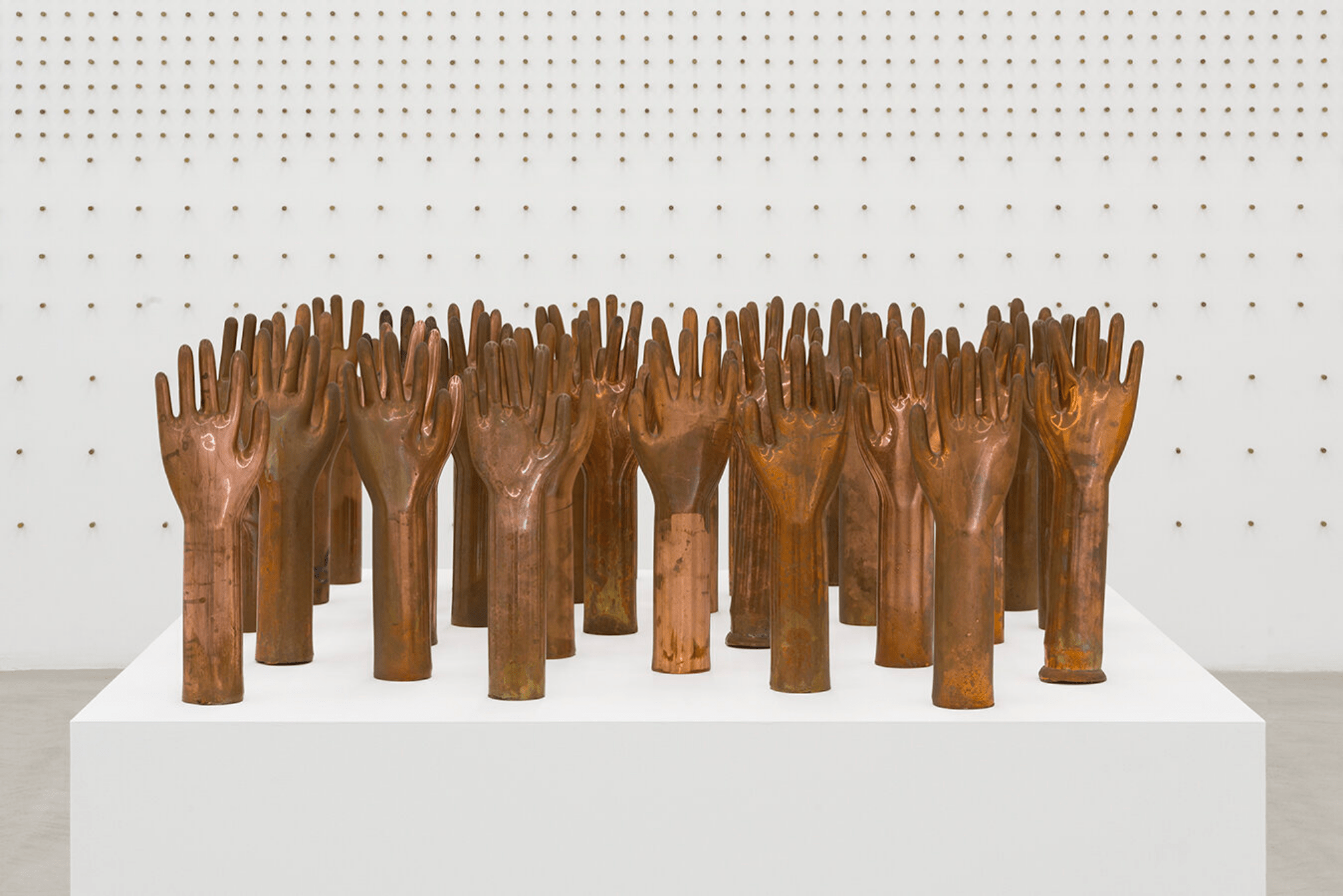The profoundly moving installation Ten Little Children Standing in a Line (One Got Shot, and Then There Were Nine) (1991), positioned to be the first work encountered in Parrasch Heijnen’s career-spanning survey of Mildred Howard, imparts a sense of the Oakland-based artist’s interest in framing social and racial inequities through a personal lens. Hundreds of 9mm bullet casings are affixed to the wall in a grid pattern. On the adjoining wall, a banner with an enlarged news photo and AP Wire clip from the 1976 Soweto Uprising contextualizes this display of lethal power. The image captures one moment in the aftermath of the South African police’s brutal response to students protesting Apartheid policies. One student bears away a lifeless boy—a protester murdered by police gunfire.
The enduring relevance of Ten Little Children derives from how it speaks not only to the ongoing reality of racial inequity but also to the dynamics of power and political and social change—and for the artist, it operates equally on an intimate scale. Her comment, delivered in a lecture at another venue—that any of the murdered students could have been one of her own—illuminates the empathy evident throughout her practice.
The exhibition comprises selected works from more than four decades and reflects Howard’s experimentation across diverse media, ranging from color Xerox photomontage to sculpture and installation. The most successful of these are crisply realized installations that deftly merge message and material.

Mildred Howard, Parenthetically Speaking…It’s Only a Figure of Speech, 2010. Courtesy Parrasch Heijnen.
Another such example, the blown glass installation Parenthetically Speaking: It’s Only a Figure of Speech (2010) follows Ten Little Children by nearly 20 years. Created during a residency at the Pilchuck Glass School, the beguilingly sensuous, yet imposing series of punctuation marks is a collection of braces, semicolons, ellipses and the like that are nearly abstract in their elegance and sophistication. Absent of narrative, Parenthetically Speaking presents only the structures that shape thought and language. Howard describes the interstices as the spaces where individuals will write their own stories, thus inviting her audience to insert themselves into the work.
Similarly addressing questions of representation and voice, Volume I & II: The History of the United States with a few Parts Missing (2007) insists that we infer which parts are missing. Side-by-side atop a pedestal, the two volumes sit open. Holes have been drilled through the pages, leaving gaping absences in the texts. The visible sections on the Louisiana Purchase and immigration policy in the early 1900s, respectively, read like typical history textbooks—glaringly eliding accounts of the slave trade, the plantation economy, genocide, discriminatory immigration policies and ideologies of “unassimilable races.”
In many of Howard’s works, the symbols of empowerment and voice appear, often as mirrors, or more literally, in photo works depicting ordinary people, or even representations of the artist herself. Starting with her own experience and then expanding outward, Howard’s work asks the question of whose histories are deemed important? The response, found throughout her practice, is to center the experiences of those who have been written out or ridden over.


